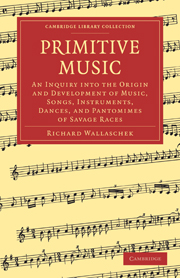
- Cited by 1
-
Cited byCrossref Citations
This Book has been cited by the following publications. This list is generated based on data provided by Crossref.
White, Emily 1935. Outline of Objectives and Materials for Rhythmic Activities for Children. The Journal of Health and Physical Education, Vol. 6, Issue. 10, p. 29.
- Publisher:
- Cambridge University Press
- Online publication date:
- August 2010
- Print publication year:
- 2009
- First published in:
- 1893
- Online ISBN:
- 9780511693731
- Subjects:
- Music, Music: General Interest, Music Criticism




